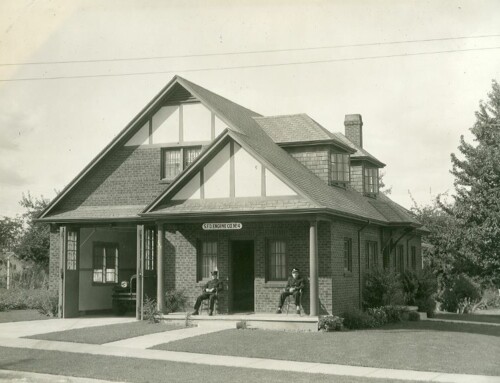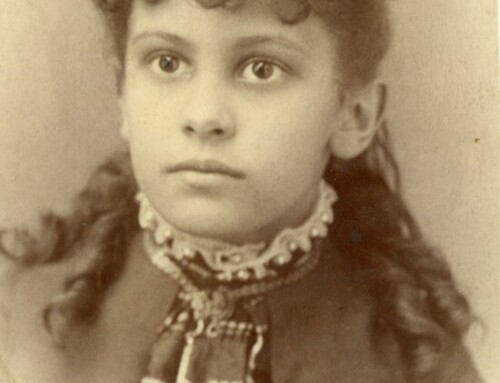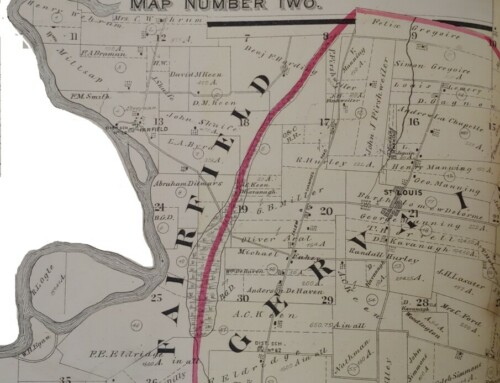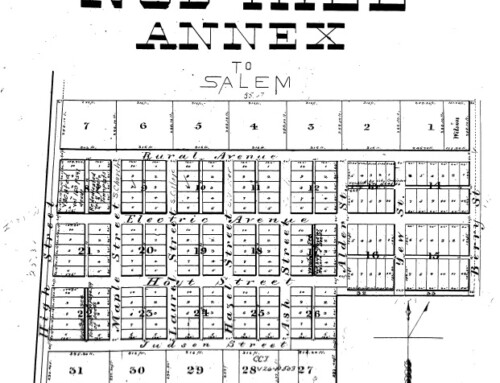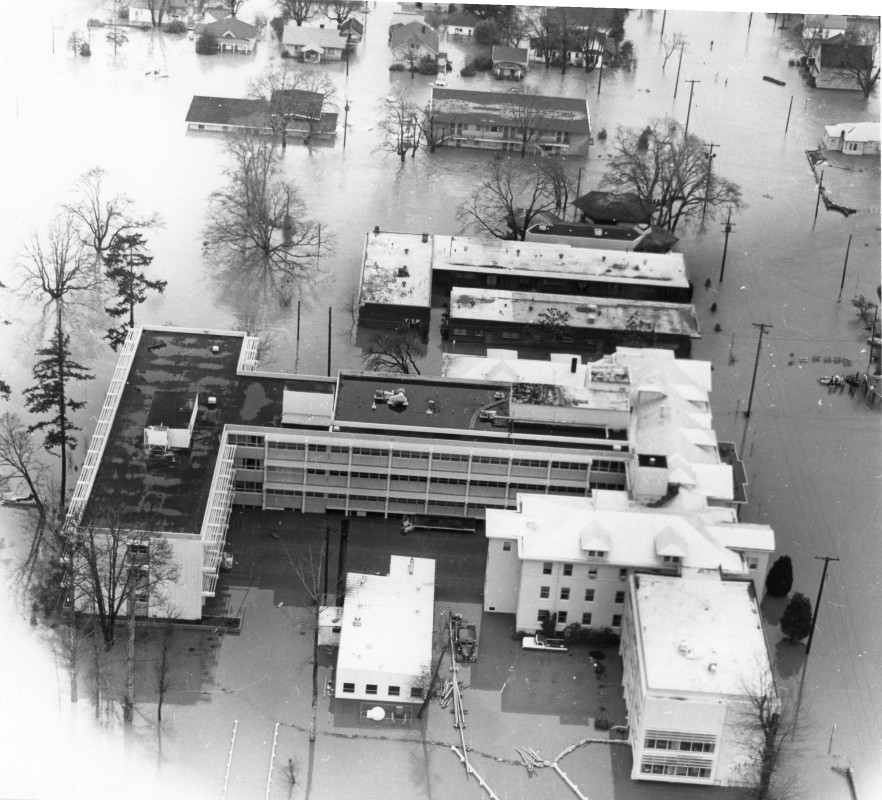
Salem Memorial Hospital surrounded by flood water after Pringle Creek breached its banks. WHC 2012.49.124
Monday December 21, 1964, Salem residents watched anxiously as the Willamette River began to rise at the rate of 3 inches per hour following a rainstorm the National Weather Service in Portland dubbed, “the most severe rainstorm to ever occur over western Oregon since the late 1870s.” The Pineapple Express storm had brought persistent heavy warm rain over the top of snow still left on the ground from the previous week. Basements in the city, including that of Salem Memorial Hospital, were flooding and storm drains were clogged with chunks of ice and snow. Shelton Ditch and Mill Creek overflowed their banks and control dams were working at full capacity. By Tuesday, Pringle Creek threatened to breach the dike around the hospital. Oregon Correctional Institution inmates, Regional Parks Department employees and hospital staff placed sandbags at the north and south sides. The inmates continued to work throughout the night pumping and sandbagging until the creek overflowed and water rushed in creating a lake around the hospital and filling the basement with 7 feet of water. At 7:30 a.m. Wednesday morning, December 23rd, the decision was made to evacuate the hospital’s patients based on a number of factors including: loss of power, threat of fire and health hazards to patients, no means to care for patients without the basement services, and no way to bring patients in or take them out. Patients would be taken to Salem General Hospital located on Center St. near the State Hospital. Ambulances from the State Hospital, Red Cross and Willamette Ambulance Service were called in to help, as well as military vehicles and private station wagons. The vehicles were brought down Oak St. as close to the hospital as possible while remaining on dry ground. Within a span of two hours all 121 patients were evacuated through hip-deep water by National Guardsmen, doctors, firemen, Memorial and State Hospital personnel and others. About 80 patients were taken to Salem General Hospital but only 66 were admitted, the rest were discharged.
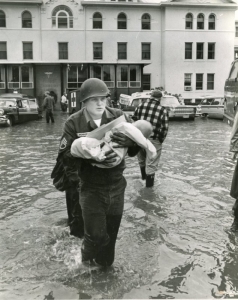
Staff Sergeant Larry Penrod carries newborn baby Garcia along with bottles, records and medication to safety during the evacuation of Salem Memorial Hospital December 23, 1964. WHC 1998.010.0050
National Guardsmen resembled proud fathers as they carried 9 newborn babies in their arms to emergency vehicles, including two infants born three hours prior to the evacuation. One premature baby was removed in an incubator. Their mothers were carried out on stretchers. “Our little babies all went out in red socks,” said Mrs. Fae Lefor, supervisor of nursing who assisted in heading the evacuation. “And I heard only one of them cry,” added another hospital employee. Staff Sergeant Larry A. Penrod of Troop C, 1st Squadron, 82nd Cavalry division of the National Guard was one of the “proud fathers” as seen in the accompanying photo. A 23-year-old father himself, he is pictured carrying two-day-old baby girl Garcia in his arms along with bottles, records, and medication. When interviewed in later years, he said he “was eager to do anything that could help” and that it “was a natural high to help somebody out who was in need. It was fun – in a strange sort of way.” Mrs. Vicki Sanders got to hold her 12-hour-old daughter Yvette for the first time while she sat on a makeshift plank bench in the rear of a National Guard truck. Vicki and her baby were carried separately through the hip-deep water to the truck, which delivered them to the home of Vicki’s mother. Only the day before, at 7:31 p.m. Vicki had given birth to Yvette. She later recalled that Pringle Creek was running across the street on Dec. 22nd, the day she went into the hospital. “I didn’t know much about the flood going on outside,” Vicky said. “I was having my own painful experience.” She said the National Guard troops and others who helped in the evacuation were “extremely well organized, but frantic. There wasn’t much time for TLC like teaching me how to take care of a baby.” Back at the hospital, Bob. L. Brooks, the hospital pharmacy operator, remained to shuttle drugs to Salem General Hospital when needed. Hospital officials then began a systematic check of the building, setting up priorities for removal of records and other equipment in case the waters continued to rise. Remaining on duty at the switchboard in the darkened hospital were Dottie Duval and Lou Davis. Many persons called the hospital after the evacuation for information and admittance. The telephone attendants had a difficult time convincing some that the hospital was closed and evacuated. Three days later on Saturday, December 26, 1964, a flood of governmental and private agencies, along with many volunteers, turned Salem Memorial Hospital into a beehive of activity in an attempt to get the flood-closed hospital back into operation. The hospital’s basement was pumped free of water and Chemawa Indian students manned shovels and brooms to clean up debris and mud. The State Prison and Correctional Institution rewired damaged motors and other electrical equipment. Pumps, fire trucks, bulldozers, and graders were pressed into service. By Monday afternoon the hospital was back in operation, though laundry and food service had been contracted to outside firms. Many of the patients evacuated remained at Salem General Hospital until their recovery. The only patients expected back were those under long recuperation orders. The Christmas Flood of 1964 was inarguably the largest flood to occur since major dam construction on the upper Willamette River and now, 50 years later it is still referred to as the “flood by which all other state disasters were measured.” It brought out the bravest and best in our community.
This article was written by Kaylyn F. Mabey for the Statesman Journal where it was printed 21 December 2014. It is reproduced here for reference purposes.
References:
- Marion County Natural Hazards Mitigation Plan – January 2011
- Oregon Statesman, December 19-31, 1964
- Capitol Journal, December 19-31, 1964
- Kathleen Carlson. “Christmas Week Flood Brings Major Flooding, December 1964” Salem Online History Project
- Statesman Journal, Feb. 14, 1996
- Oregon Disasters – Rachel Dresbeck



